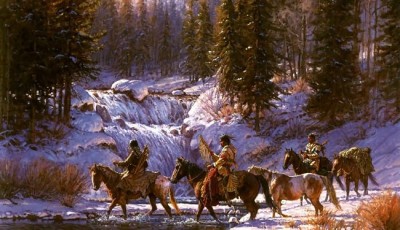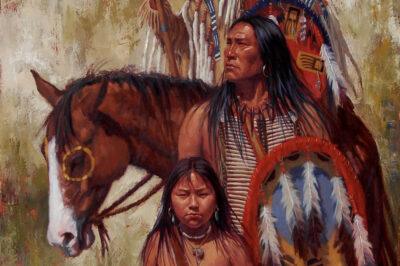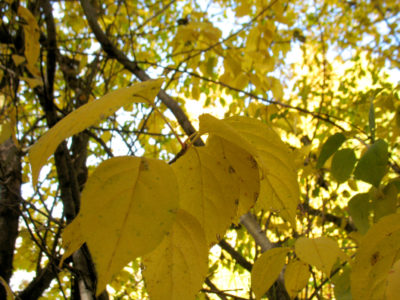 Native Americans, like many other indigenous tribes that lived off the land, practiced a sustainable way of living. They hunted, fished and cut down trees to provide for food, fuel and shelter, but we can see that they had a need-based lifestyle, not a pleasure-based one.
Native Americans, like many other indigenous tribes that lived off the land, practiced a sustainable way of living. They hunted, fished and cut down trees to provide for food, fuel and shelter, but we can see that they had a need-based lifestyle, not a pleasure-based one.
The great reverence Native Americans had for trees, mountains, water bodies, and even the animals they killed for food, protected the world around them from exploitation. It also helped subsequent generations to continue with their traditional way of life.
The Native American tribes maintained a unique relationship with trees, in particular. The associations they drew between different types of trees and divine forces or ancestral spirits bear evidence to it. Among living things, trees grew taller and stronger with every passing year, outliving several generations. They provided almost everything the people needed.
Food
Trees were a reliable source of food to many Native American tribes. While berries and other fruit were seasonal, pines, pecans, walnuts and other nut trees provided year-round nutrition. Oaks were valued for acorns. The leached flour made from acorns was a staple of Northern Californian tribes of Miwok, Karok, Yurok, Hupa and Pomo. These tribes are known to have cultivated orchards of these useful trees.
Pine trees that grew abundantly in the northern regions provided pine nuts, and tribes even used their bark in times of scarcity. The Adirondack tribe of upstate New York earned its name, which means “bark eaters” in Iroquois, from its consumption of pine bark. Early European visitors to the continent found large stretches of pines with the bark stripped, but it should be noted here that it was done without killing the trees. Birch, spruce, slippery elm, tamarack and balsam fir are some of the other trees that provided edible bark.
Medicinal Use
The indigenous people of America met most of their medicinal needs with herbal remedies that included the use of leaves, bark and other parts of trees. Willow bark tea is the most famous among their concoctions. This potent brew of the “toothache tree” is effective in bringing down fever and relieving headaches and arthritic pains. This is not surprising, since the tree contains salicylic acid, the ingredient that gives aspirin its analgesic effect.
The Hidden Secrets Of Making Herbal Medicines…Right At Your Fingertips!

Image source: Jamesayers.com
Beech was another tree with medicinal properties. Even the water collected in the hollows of these trees was used to treat skin problems. The Iroquois used the boiled leaves as dressing for burns and prepared a salve with beechnut oil and bear grease to ward off mosquitoes. Rappahannock people found beech tonic to be effective against poison ivy.
Sumac, white pine, slippery elm, red cedar, oak and maple also figured in the medicine man’s chest.
Native Americans often attributed symbolic characters to medically important trees. Such as:
- Cedar – Used for respiratory ailments, it symbolized cleansing, healing and protection. People used to wear pieces of red cedar to around their neck for prosperity and protection from illnesses.
- Willow – Anti-inflammatory and analgesic, willow symbolized wisdom, strength and stability.
- Oak – Known to improve circulation and to remove blood problems, these large trees symbolized courage and strength of character.
- Pine – A popular cold and flu remedy, pine tea was used for treating sore throat, chest congestion and lung infections. The tree was symbolic of peace and harmony and enhanced creativity.
- Maple – Providing a sweet remedy for digestive troubles, maple was a symbol of generosity, promise, offering and balance.
The branches were always taken with the permission of the respective tree and with elaborate rituals. This prevented mindless vandalism and opportunistic trade that would have led to their extinction.
Totem Poles
The Native American tribes of the Pacific Northwest traditionally fashioned totem poles out of tree trunks, particularly the western red cedar. These sculptures probably depicted important historical events or family legends. Some of them might have been made out of pure artistic expression too.
The gigantic, free-standing ones we see today are thought to have been made after the arrival of the Europeans. The totem poles of Tlingit, Haida and Kwakiutl tribes were originally smaller indoor structures. They were carried into the houses by men, and made into decorative structural supports for their homes.
Practical Use
Many tools of the trade such as weapons, implements, utensils, items of clothing and canoes were fashioned out of wood and bark. Oak wood was used for bows. The Caddo tribe from East Texas found bois de arc trees growing among the pines to be extremely useful. The strong and flexible wood of this tree was excellent for bows and arrows. Since these trees were not found elsewhere, the tribe profited from trading the weapons to other people. The Cahuilla tribe made bows with mesquite or willow wood, and they strung them with mescal fiber.
The Secret To Starting Fires In Even The Most Extreme Conditions
People extracted fiber from the inner barks of trees to make skirts and sleeping mats. The Chilkat blankets of the Tlingit tribe, made of mountain goat hair and cedar bark fiber, are real works of art and are extremely practical.
 Houses were made of wood or supported on thick wooden frames. Red cedar was favored because of its lasting quality and insect-repellent properties, not to mention its unique and long-lasting smell. Flexible saplings were used as structural elements in some cases. Whole villages were often protected by walls made of tree trunks and branches.
Houses were made of wood or supported on thick wooden frames. Red cedar was favored because of its lasting quality and insect-repellent properties, not to mention its unique and long-lasting smell. Flexible saplings were used as structural elements in some cases. Whole villages were often protected by walls made of tree trunks and branches.
Tree bark was used like shingles for roofing along with animal skins and mats woven from the thin inner bark of trees. One important point to note here is that the people never wasted any part of the tree.
Some Native American tribes had unique relationships with particular trees, such as:
The Tree of Life
The western red cedar (Thuja plicata) has aromatic wood used for furniture and ceremonial burning. The bark is used as shingles and the inner bark fiber for clothing and mats. Besides totem poles, the Northwestern tribes made large canoes from hollowed-out logs of red cedar, some of them measuring 60-feet long. Every part of the tree has some use; even the roots are woven into watertight baskets.
Most Native American tribes, and the Anishinaabeg tribe in particular, hold this tree as sacred. The Cherokees maintain that their ancestors and protective spirits abide in these trees, and they often carry a piece of cedar wood with them. Special rituals accompany the cutting of a cedar tree. It is the clan symbol of the Hopi tribe.
The Little Cedar Spirit Tree
Known as Manido Gizhigans, it is a white cedar perched precariously on a rocky outcrop on the edge of Lake Superior at Hats Point in Minnesota. This crooked little tree that is over 400 years old is sacred to the people of the Grand Portage Ojibwe reservation nearby. People sailing past often offer a pinch of tobacco to the Tree Spirit.
The Sacred Oak
The Lenape Indians of the mid-Atlantic hold the Sacred Oak dear as it saved them from death and war. According to legend, the Great Spirit in the majestic Chinkapin oak tree, which stands tall in the Oley Valley of Pennsylvania, healed the wife of a Lenape chief. The Great Spirit later counseled the chief to offer gifts of peace to the enemies.
Ultra-Efficient Water Filter Fits In Your Pocket!
The Tree of Peace
Another legend describes how six warring tribes united into the powerful Iroquois League, thanks to a large white pine tree. They brought their weapons to the tree and buried them beneath it. The roots of the tree are thought to have carried away the weapons to the underground waters, and with them, the differences between the clans.
The Trail Trees
These are a series of crooked oak trees that native tribespeople bent as saplings to mark their trails. They have a horizontal branch that points in the right direction to follow. They might have marked sites of importance, such as water sources or mines. Series of trail marker oaks and maples are found in several states.
Caring for the Trees
Although native people had a healthy reverence for the trees, that reverence did not deter them from making use of these important resources. Wherever possible, they avoided cutting down trees, and instead harvested useful parts in a sustainable way. The elaborate rituals associated with the felling of trees helped people think twice before taking such drastic measures.
Native Americans also protected trees by setting fire to the undergrowth periodically in fall or winter. While the fire destroyed the small plants that crowded the base of the trees, the tall trees themselves were not affected. Clearing the undergrowth prevented wildfires in summer that could inflict more damage. The tough seeds of certain trees sprout only after being subjected to the heat of fires, so this practice could have helped sustain plant diversity in the woods.
What would you add to this story? Share your thoughts in the section below:
Learn How To ‘Live Off The Land’ With Your Gun. Read More Here.
 Off The Grid News Better Ideas For Off The Grid Living
Off The Grid News Better Ideas For Off The Grid Living




